Sam Firstenberg has worked in the industry for over 30yrs. He has directed genre classics such as ‘American Ninja’, ‘Avenging Force’, ‘Revenge of the Ninja’ and ‘Beakin’ 2′. Sam was also responsible for giving several stars their first break including Michael Dudikoff, Kirstie Alley, and Mark Dacascos.
Jason: Did you always know that you want to pursue a career in the film industry?
Sam Firstenberg: I have loved movies since I was a kid growing up in Jerusalem; we had a neighborhood movie theater. That ran a twin-bill double feature, big-Hollywood movies like Tarzan and World War 2 pictures. I always liked American movies. As mandatory in Israel, you must serve three years in the military after high school. When I got out I was 21yrs old, I put myself on an airplane and came to Los Angeles to study filmmaking. But the problem was I knew absolutely nothing about making movies. During that period I was lucky enough to meet Menahem Golan who would later become head of Cannon Films. He was making a film with Tony Curtis titled Lepke, I asked for a job on the set and I became a runner. From there on I slowly moved up to asst. director. But my intention was always to direct; in 1979 I went back to school for Graduate work at Loyola Marymount University. When I went back I had this massive amount of experience, from working on features and directing a few short films of my own. I thought the program would be a fantastic opportunity to make a film because you have access to equipment and volunteer crew members, everything was available to me. I wrote a script One More Chance, another student was a producer and it actually became a class for the film school. We shot every weekend for a year and a half. I took my student loans and poured it all into the movie. I actually cast Kirstie Alley in her first role. When we finished the movie I contacted Menahem Golan who, along with Yoram Globus, had purchased Cannon Film. I showed them my film and they liked it. We made a deal in which they agreed to take care of some debt I had occurred on the production, and they would in-turn handle distribution. That was how I became a director and the beginning of a long relationship with Cannon.
J: Do you feel going to film school was instrumental in your early career?
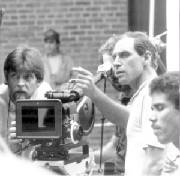 SF: It’s not mandatory to making it in Hollywood. But I believe it’s a fantastic experience to have gone through. I tell anyone who asks to go to film school. The creative freedom allows you to explore ‘other areas’.
SF: It’s not mandatory to making it in Hollywood. But I believe it’s a fantastic experience to have gone through. I tell anyone who asks to go to film school. The creative freedom allows you to explore ‘other areas’.
J: Were you always drawn to Action and Martial Arts films?
SF: In the beginning I saw myself as a director who would make social dramas, serious type-movies. I never liked European films, I grew up on John Ford, and although I enjoyed action films I never thought it was something I was prepared to do. I don’t have any background in Martial Arts or physical combat sports at all. Now Cannon had just done a picture titled Enter the Ninja, it was moderately successful and they decided to make a follow-up. The sequel would become Revenge of the Ninja. In the first picture Sho Kosugi was the villain, however the producers decided to make him the hero in ‘Revenge’. But they didn’t have a director; Menahem Golan himself had directed ‘Enter’. He didn’t want to direct another ‘Ninja’ so it was coincidental. They asked me, “Do you know how to put together an action sequence?” Here I am a young director straight out of school. So I told them “Of course”. I lied, in truth I knew nothing about directing an action picture. They took me on my word and I was hired.
J: Can you tell us about your experience directing your first feature, ‘Revenge of the Ninja’?
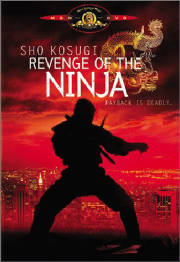 SF: We had a long period of pre-production. During that time our star, Sho Kosugi, really introduced me to the world of Martial Arts and Ninjas. Not in a physical way but through books and his vast well of knowledge on the subject. Through him I was introduced to the students in his schools, many of whom later appeared in the film. Having no background in the Martial Arts freed me of limiting myself within the genre norms. I was not a purist; I tried to blend the Ninja stuff with action out of films like Bullet and French Connection. I think that’s the secret to the success of Revenge of the Ninja, it’s a Karate film with car chases and guns. I must give credit to Sho Kosugi for going along with it; he understood we weren’t making a Bruce Lee style film and he saw the commercial potential in the fusion. As fate would have it I ended up making a lot of these Martial Arts and Ninja movies and I continued to learn more and more through the people I encountered on those pictures.
SF: We had a long period of pre-production. During that time our star, Sho Kosugi, really introduced me to the world of Martial Arts and Ninjas. Not in a physical way but through books and his vast well of knowledge on the subject. Through him I was introduced to the students in his schools, many of whom later appeared in the film. Having no background in the Martial Arts freed me of limiting myself within the genre norms. I was not a purist; I tried to blend the Ninja stuff with action out of films like Bullet and French Connection. I think that’s the secret to the success of Revenge of the Ninja, it’s a Karate film with car chases and guns. I must give credit to Sho Kosugi for going along with it; he understood we weren’t making a Bruce Lee style film and he saw the commercial potential in the fusion. As fate would have it I ended up making a lot of these Martial Arts and Ninja movies and I continued to learn more and more through the people I encountered on those pictures.
J: How did ‘American Ninja’ come about? Was it difficult working with a leading Actor that had no previous Martial Arts training?
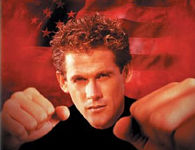 SF: Cannon decided to go in a different direction with their new film. The producers wanted to switch from an Oriental Ninja to an American Ninja. There was an open casting call and I saw well over 400 men for the part. In walks Michael Dudikoff, and a flash went off, immediately in my mind he was already the ‘American Ninja’. His look was right; Michael was a surfer boy from Redondo Beach CA. It’s true he had no previous Martial Arts training prior to being cast. But he was very athletic from years of surfing; he had little previous experience in films and never on an action picture. Working on American Ninja was Mike Stone as our choreographer. Mike himself is a very famous Martial Artist. He was associated with Bruce Lee and served as Elvis’s personal Karate teacher. Stone started to work with Dudikoff rehearsing fight sequences four weeks prior to filming. During this time I would check in with Stone and he assured me that Dudikoff was very adept at imitating. It’s like a dance routine, really. Now there are different ideologies on how to shoot action. I believe in editing, I think it enhances the action and increases stimulation. So I shot in pieces. Stone and his team would show Dudikoff a six to eight move segment and I would film that, cut and then shoot the following set of movements. One of Dudikoff’s stunt doubles in the film is Richard Norton, who by his own right later became something of a Karate movie star. If you watch the film closely you can tell it’s Richard some times and not Dudikoff, but they look very much alike.
SF: Cannon decided to go in a different direction with their new film. The producers wanted to switch from an Oriental Ninja to an American Ninja. There was an open casting call and I saw well over 400 men for the part. In walks Michael Dudikoff, and a flash went off, immediately in my mind he was already the ‘American Ninja’. His look was right; Michael was a surfer boy from Redondo Beach CA. It’s true he had no previous Martial Arts training prior to being cast. But he was very athletic from years of surfing; he had little previous experience in films and never on an action picture. Working on American Ninja was Mike Stone as our choreographer. Mike himself is a very famous Martial Artist. He was associated with Bruce Lee and served as Elvis’s personal Karate teacher. Stone started to work with Dudikoff rehearsing fight sequences four weeks prior to filming. During this time I would check in with Stone and he assured me that Dudikoff was very adept at imitating. It’s like a dance routine, really. Now there are different ideologies on how to shoot action. I believe in editing, I think it enhances the action and increases stimulation. So I shot in pieces. Stone and his team would show Dudikoff a six to eight move segment and I would film that, cut and then shoot the following set of movements. One of Dudikoff’s stunt doubles in the film is Richard Norton, who by his own right later became something of a Karate movie star. If you watch the film closely you can tell it’s Richard some times and not Dudikoff, but they look very much alike.
J: Can you shed light on the internet rumors suggesting that your film ‘Avenging Force’ is the unofficial sequel to Chuck Norris’s 1985 film ‘Invasion U.S.A.’?
SF: It’s not a sequel but there is a story behind that rumor. Cannon was producing Invasion USA with Chuck Norris starring. They immediately wanted to come up with a sequel in order to use Chuck again, to continue squeezing the lemon if you will. The script that was written for the proposed sequel eventually was turned into Avenging Force. From a story point it’s not a sequel, however it does have the same characters. When Chuck Norris finished shooting Invasion USA he read the script and he didn’t like it at all. The original draft was about a father and daughter, and he didn’t want to do the film. By this time American Ninja had come out and Cannon recognized that Michael Dudikoff was also going to be a mini-star. So the producers gave Michael the script and he responded well to it. The only change that we made to the final draft was the story was now about a brother and sister, because Michael was too young to have a daughter. James Booth wrote the screenplay and he’s actually in the film, it was nice to have the writer on-set everyday to make minor adjustments when needed. Otherwise it’s the same script that was presented to Chuck Norris, that’s why the main character is named Matt Hunter in both Invasion USA and Avenging Force.
J: Can you tell us about your working relationship with actors Steve James, Michael Dudikoff and David Bradley?
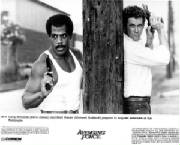 SF: Steve James was an extremely nice guy that really wanted to help and work with you in any way. We were all the same age at that time. So we’d shoot and then go drink and it was a relaxed and positive experience. Sadly Steve James passed away a few years back and David moved to Texas, but Michael and I are still friends to this day. Shooting was hard work though; I’d film for 12hrs and then go watch another 2hrs-3hrs of dailies, while the actors prepared for the next days shoot. David and I shot two films in South Africa and another in Israel. Steve James, Michael Dudikoff, and David Bradley don’t come from a school of acting. We had limited time and money to shoot these films so they need that background in action. I deliver very rich movies. Often you see low-budget films and they are poor in content, I don’t mean story or script but content. Sometimes because the schedule is so short and the budget is so tight that if you don’t really move and push you won’t bring enough material to the editing room. The more footage you can bring into editing, the richer the movie will look. My concern always when working on low-budget moves was to make them look as big as possible. This requires a lot of takes and often the inclusion of additional scenes. Also all the films I did with those guys were on-location so we were together for 24hrs a day.
SF: Steve James was an extremely nice guy that really wanted to help and work with you in any way. We were all the same age at that time. So we’d shoot and then go drink and it was a relaxed and positive experience. Sadly Steve James passed away a few years back and David moved to Texas, but Michael and I are still friends to this day. Shooting was hard work though; I’d film for 12hrs and then go watch another 2hrs-3hrs of dailies, while the actors prepared for the next days shoot. David and I shot two films in South Africa and another in Israel. Steve James, Michael Dudikoff, and David Bradley don’t come from a school of acting. We had limited time and money to shoot these films so they need that background in action. I deliver very rich movies. Often you see low-budget films and they are poor in content, I don’t mean story or script but content. Sometimes because the schedule is so short and the budget is so tight that if you don’t really move and push you won’t bring enough material to the editing room. The more footage you can bring into editing, the richer the movie will look. My concern always when working on low-budget moves was to make them look as big as possible. This requires a lot of takes and often the inclusion of additional scenes. Also all the films I did with those guys were on-location so we were together for 24hrs a day.
J: Why weren’t you involved in ‘American Ninja’ 3 or 4?
SF: I believe it was all economics. Cannon had developed a franchise with the first two installments and they decided to make a couple of very low-budget sequels in South Africa to maximize profits. It’s the chicken with the golden egg scenario. I was never approached about directing either of those films.
J: You were part of ‘Cannon’ studios in its heyday. Can you tell us about your experience with Golan-Globus?
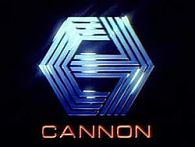 SF: Cannon was an interesting place. When we started it was a very tiny company of 8 people. Through the years it got bigger and turned into a ‘mini-major’ studio, it grew to about 40-50 employees. At the head of the company were two guys, Menahem Golan the creative force and Yoram Globus the money man. Menahem had directed several pictures himself and he really enjoyed coming to screenings to watch sequences being put together, there was an excitement about making movies. In addition they never bothered me during production. They would hand me a script and I would bring them back a film, we also shot on location far away from the offices. On the other side of this was Yoram . The company’s goal business model was to make low-budget genre films better known as ‘B’-movies. They sold these films to audiences very well; this was during the golden age of home video. Later they tried their hand with ‘Superman’ and other big-budget movies which eventually brought about the company’s downfall. You could see the end of it coming when they got involved investing in theater-chains and distribution.
SF: Cannon was an interesting place. When we started it was a very tiny company of 8 people. Through the years it got bigger and turned into a ‘mini-major’ studio, it grew to about 40-50 employees. At the head of the company were two guys, Menahem Golan the creative force and Yoram Globus the money man. Menahem had directed several pictures himself and he really enjoyed coming to screenings to watch sequences being put together, there was an excitement about making movies. In addition they never bothered me during production. They would hand me a script and I would bring them back a film, we also shot on location far away from the offices. On the other side of this was Yoram . The company’s goal business model was to make low-budget genre films better known as ‘B’-movies. They sold these films to audiences very well; this was during the golden age of home video. Later they tried their hand with ‘Superman’ and other big-budget movies which eventually brought about the company’s downfall. You could see the end of it coming when they got involved investing in theater-chains and distribution.
J: You were recently involved in a film that was based on rediscovered footage from an unreleased film by the infamous Ed Wood. Can you tell us about this project?
SF: I was approached by a group who had found some lost footage from an unfinished Ed Wood film. They wanted to make a low-budget spoof. So we built a story and characters for our script around the remaining footage. It’s a throwback to those films of the 1950’s; the story takes place on an imaginary plant inhabited by females. We ended up shooting so much material; we didn’t even use any of the recovered Ed Wood footage. It’s very tongue-in cheek and honestly it was a lot of fun.
J: You’ve worked on Musicals, Martial Arts films, and Sci-fi. Is one genre harder than the other?
SF: I don’t think so. I always saw myself as a craftsman. I don’t like writing scripts. There are many different types of directors, some have a concept that they see through from script to screen. But I always considered myself a craftsman. My talent was to be able to take a written page and turn it into a visual story. The Action genre is pure cinema magic; in my films I enjoy 6-7 minute action sequences. Usually in a script these scenes are vary vaguely described. Now on-set you must collaborate with your crew to come up with a choreographed sequence that will later cut together in the editing room. Something is created from nothing. All action sequences should have a beginning, middle and end, some type of conclusion. It should tell a mini story. A director like me should be able to work freely in many genres.
J: Out of all the films you’ve directed, which are your top three?
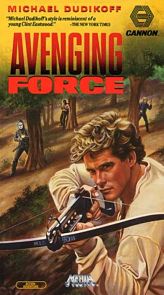 SF: The most interesting from a cinematic standpoint is Avenging Force. Unfortunately it wasn’t as successful as American Ninja financially, but it has deeper complexity in the story. We had a large budget for that film and we were able to shot in and around the bayous of New Orleans; we even re-created Mardi Gras. That sequence itself involved over 4000 extras and took two days to shoot. All of this helped give the film a certain ‘look’, and I feel the action is very compelling. We tried to capture the dark side of New Orleans, and after all these years the story still holds together. I also have fond memories of Breakin’ 2: Electric Boogaloo, because we had a lot of fun on the set. It was music blaring from the morning till night, and your working with young kids who were enthusiastic about dancing. Coincidentally it has become somewhat iconic, every time people mention 80’s films ‘Breakin 2’ comes up. The third is American Ninja, when we made that film it was intended for teenagers. The kids that saw it then are adults now, and I see them in the streets and they can’t wait to tell me how much they loved American Ninja. I believe the success of that film is due to the love story. Yes, it’s an action picture but there is a very innocent beautiful love story in it. There is a young handsome guy who longs for a girl out of his league. I call it innocent because of the lack of a sex scene. On the other hand the film is also a ‘buddy-movie’ between the characters played by Michael Dudikoff and Steve James. The action is also quite spectacular, that finale battle sequence is over ten minutes long. This is the secret to the lasting appeal of American Ninja after 25yrs.
SF: The most interesting from a cinematic standpoint is Avenging Force. Unfortunately it wasn’t as successful as American Ninja financially, but it has deeper complexity in the story. We had a large budget for that film and we were able to shot in and around the bayous of New Orleans; we even re-created Mardi Gras. That sequence itself involved over 4000 extras and took two days to shoot. All of this helped give the film a certain ‘look’, and I feel the action is very compelling. We tried to capture the dark side of New Orleans, and after all these years the story still holds together. I also have fond memories of Breakin’ 2: Electric Boogaloo, because we had a lot of fun on the set. It was music blaring from the morning till night, and your working with young kids who were enthusiastic about dancing. Coincidentally it has become somewhat iconic, every time people mention 80’s films ‘Breakin 2’ comes up. The third is American Ninja, when we made that film it was intended for teenagers. The kids that saw it then are adults now, and I see them in the streets and they can’t wait to tell me how much they loved American Ninja. I believe the success of that film is due to the love story. Yes, it’s an action picture but there is a very innocent beautiful love story in it. There is a young handsome guy who longs for a girl out of his league. I call it innocent because of the lack of a sex scene. On the other hand the film is also a ‘buddy-movie’ between the characters played by Michael Dudikoff and Steve James. The action is also quite spectacular, that finale battle sequence is over ten minutes long. This is the secret to the lasting appeal of American Ninja after 25yrs.
J: Are you working on any future projects at the moment?
SF: I’m always involved in trying to put together something. There have been large changes in the world of Low-budget action movies. It has to do with economics. In the 80’s we made these pics for about $2-4million, or around $12million in adjusted dollars. Producers today can’t afford to spend over $1.5 million because of the narrowed market. We had 8-9 weeks shooting on American Ninja, today you don’t get over 4 weeks. It’s impossible to match the quality of those films with a truncated shooting schedule. I wouldn’t be able to make Avenging Force today unless it was with a major studio and had a star attached. The question becomes, “Do I want to work on super-low budget films?” These experiences can be extremely frustrating because you’re not able to produce what the script calls for. I just directed a pilot of a TV show that will air in Israel. Hopefully it will get picked-up and we’ll get the go-ahead to start on the series. I call it the business of dreams, your selling the audience a dream. We go to the theaters, sit in the dark and let ourselves be taken to another world for a period of time.


Loved the interview! I remember watching American Ninja as a really young kid! Too bad he didn’t talk about American Samurai and Mark Dacascos. Would have loved that.